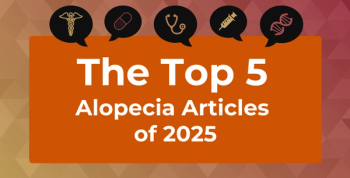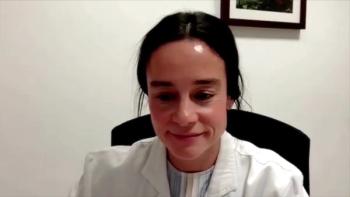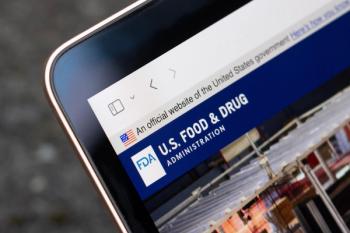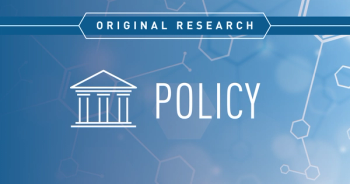
Oncology Experts Spotlight Breakthrough Therapies, AI-Driven Care at PCOC 2025
Oncology experts at PCOC 2025 discuss breakthrough therapies, AI-driven care, and evolving care delivery models shaping the future of oncology.
In late September,
In line with this theme, The American Journal of Managed Care® (AJMC®) asked experts throughout the meeting to share which recent oncology innovations they found most exciting:
- Vishnukamal Golla, MD, MPH, vice president of clinical technology and performance at Evolent
- Ryan Haumschild, PharmD, MS, MBA, CPEL, vice president of ambulatory pharmacy at Emory University and Winship Cancer Institute
- Scott Soefje, PharmD, MBA, BCOP, director of pharmacy cancer care at Mayo Clinic
- Mark Fendrick, MD, director of the Center for Value-Based Insurance Design at the University of Michigan and co–editor in chief of AJMC
- Vivek Subbiah, MD, chief of early-phase drug development at Sarah Cannon Research Institute
- Sophia Humphreys, PharmD, MHA, BCBBS, executive director of pharmacy at Providence Health
This transcript was lightly edited for clarity; narration and captions were generated by artificial intelligence (AI).
Transcript
Narration: In late September, stakeholders across the oncology space gathered for the Patient-Centered Oncology Care conference in Nashville, Tennessee. Much of the meeting revolved around this year's theme, "Finding Our Rhythm: Embracing Change in Oncology Care."
In line with that theme, The American Journal of Managed Care asked experts to share which recent oncology innovations excite them most. Their insights highlight the expanding role of
Golla: I would have to say, all of the work around embedding clinical decision support into an electronic medical record is probably one of the most exciting things. I think the power of using predictive analytics to understand and pick up a patient with a lot of data points that, frankly, a human isn't able to do on their own, to predict what their risk of cancer is, what their risk of spend is, where we might have pitfalls, and what resources we should be able to get in front of them early, is really important. Bringing that directly to the fingertips of the actual clinician is, I think, really powerful.
We're seeing that in a number of different ways. We're seeing a lot of companies embedding traditional things, like UpToDate or OpenEvidence, and taking all of that knowledge and putting it right at the hands of the clinician, and also bringing in some of that predictive analytics. I think that's going to be a game-changer for how patients are treated and how they're seen by our physicians.
Haumschild: Innovations in oncology [that] excite me, number one, are probably the cell and gene therapies from a therapeutic standpoint. The Enhancing Oncology Model and some of the pathway development that we're seeing with commercial payers excite me as well, but I would say one of the biggest ones is how we're taking bispecifics and cell and gene therapies and moving them to outpatient. I think that's where the innovation sits, because we're bringing it closer to the patient, we're reducing the cost of care, and we're making it much more sustainable; we're not dependent on an inpatient bed.
I think we're sharing a lot of the data throughout the country, both from a payer perspective and a manufacturer, but really a provider. People are getting on board with this, and I think this will make the cell and gene therapy, the bispecific antibodies, and these innovative treatments really successful in the long run.
I think another innovation that we're seeing more and more is, typically, we always siloed the payer, the provider, the employer, or the manufacturer. It's really interesting, now we're seeing so much overlap, and we're seeing across the country the integrated delivery networks really stepping forward. They're generating self-funded health plans. They're the provider, and they're working collaboratively with their own employer, other employers, and manufacturers.
I think that's really kind of that dual threat that I think is, in a good way, exciting for the industry, because it has the chance to be an industry disruptor but drive extreme value, both from a payer and provider perspective, that prioritizes outcomes and stewarding cost of care.
Soefje: I think the bispecifics are the most interesting thing as we go forward, particularly as you start thinking about the idea that for any tumor that has a target, we might be able to design an antibody that can work with it. As we watch the bispecifics, I know the T-cell engagers are the ones that are most used right now and create some of the problems because of the toxicities, but there are other areas and other targets that we can be using. I think watching what bispecifics happen, I know a trispecific is on the way, all of these kinds of things, I think, as someone who gets all excited about pharmacology, it makes it interesting to watch, to see what's happening as we go.
I think of all the other things that I'm interested in, [that] I think will create some exciting times, is how do we deal with some policy issues? Some of it's going to be good, some of it is going to be bad. It's going to be intriguing to watch all of these policy issues evolve.
Subbiah: The innovations should be plural, because we live in an unprecedented era of genomically targeted therapies, immunotherapies, antibody-drug conjugates, PROTAC [proteolysis-targeting chimera] degraders, radioligands, CAR [chimeric antigen receptor] T cells, and beyond. Again, these are unbelievable advances, unprecedented advances, in oncology. AI-based machine learning algorithms are also helping us. I hope that AI can help and assist these in the future.
One of the greatest advances in the last decade is tumor-agnostic drug development. What is tumor-agnostic drug development, or tumor-agnostic therapy? We are used to developing drugs for specific cancers: breast cancer, kidney cancer, prostate cancer, and lung cancer. Tumor-agnostic drugs are a different way of thinking, focusing on the biomarker and not focusing on the tumor type or where the tumor comes from.
We now have almost 10 different drugs approved in a histology-agnostic manner. My hope is that within the next 25 to 50 years, we'll have 50 drugs approved in a tumor-agnostic manner based on the biomarker and not based on the tissue of origin, where the cancer arose from.
Humphreys: It has to be bispecifics. One, we're seeing very promising clinical outcomes. Two, we're actually seeing a lot better safety profiles with the post-marketing real-world studies.
The fact that the FDA has taken the REMS [Risk Evaluation and Mitigation Strategy] away from this product proves to us that they are having more confidence in this. With that approach, we will be able to bring this care closer to patients' homes and allow more virtual and telehealth providers so that we can have our patients treated more effectively, and we can provide this care more sustainably for health systems and payers alike, financially.
Newsletter
Stay ahead of policy, cost, and value—subscribe to AJMC for expert insights at the intersection of clinical care and health economics.








































